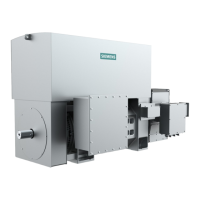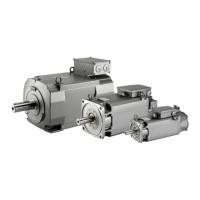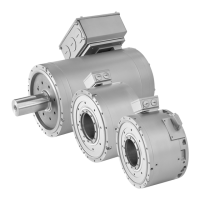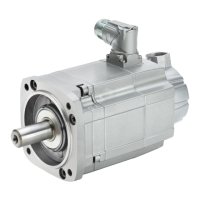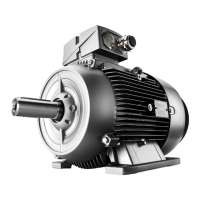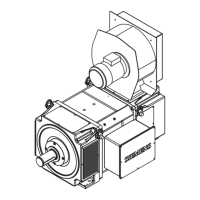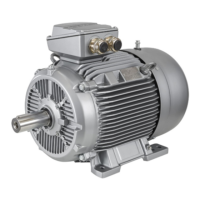Mechanical mounting
6.3 Installing/removing the rotor
SIMOTICS M-1FE2 built-in motors
Hardware Installation Manual, 04/2020, A5E50074509B AA
101
2. Temper the components according to the joining method used
3. Position the components according to the joining method used.
4. Join the components quickly to their final position.
5. Allow the components to cool down to room temperature.
6. Measure the radial runout at the reference level and mark the position of largest
deviation, see the "Checking the radial runout" figure.
❒
6.3.5 Compensating mechanical stresses and deformations of the spindle shaft
Note
The stress compensation is possible only for mounted rotors with sleeve.
The thermal joint causes stresses (pressing) by the fit interference of the spindle shaft.
These stresses can deform the spindle shaft.
After joining, a destressing of the spindle shaft with oil pressure for stress compensation or
for reducing the spindle deformation is recommended.
The following chapter describes the compensation for the mechanical stresses.
Stress compensation principle
Forcing oil between the spindle shaft and the rotor core releases the step press fit.
Note
Undesired displacement between spindle shaft and rotor package
If the pressure is sufficient, the
spindle shaft will slide off the rotor core.
Prevent the relative axial movement when relieving stress (see figure "Design of the
equipment for stress compensation and realignment (example)")
Requirements for the compensation for the mechanical stresses
Make sure that the following safety measures are observed for the stress compensation.
● Check the pump and accessories for functional safety.
● Operate the pump only with manometer.
● Do not make any changes to the device and its safety equipment.
● Observe the notes contained in the oil press pump operating instructions.
● Wear a face protective mask and closed work clothes.
● Vent the hydraulic system.
The oil pressure is built up manually.
● Do not exceed the maximum permissible oil pressure (see "Maximum permissible oil
pressure" table)
